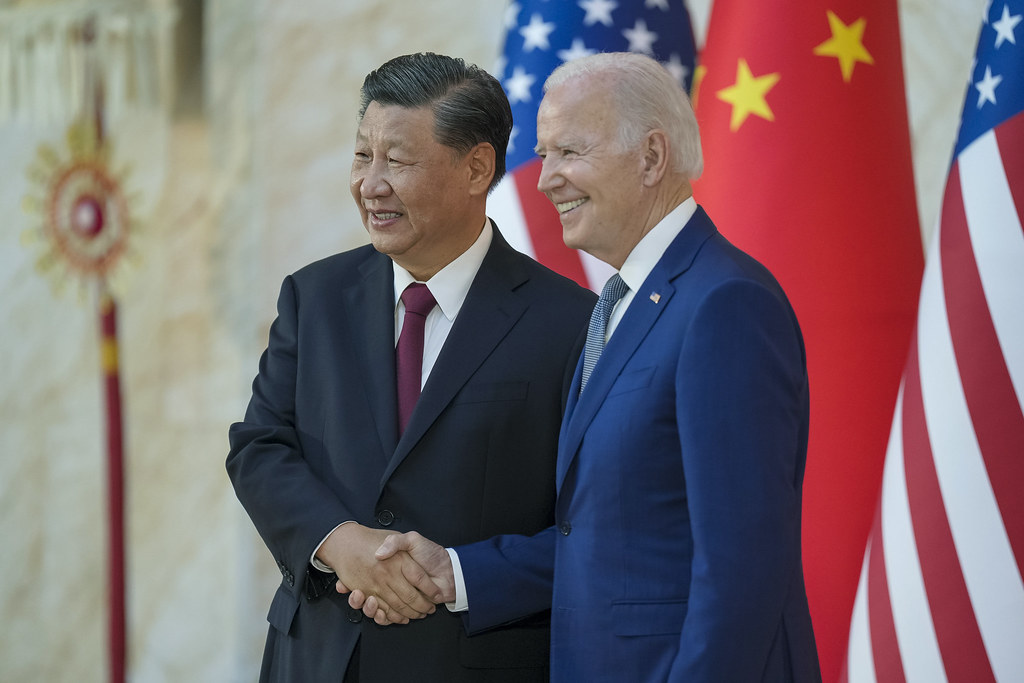The consequences of Donald Trump’s impending return overshadowed most reports of Xi Jinping’s likely last meeting with Joe Biden at the weekend. The change on the horizon perhaps provided the impetus for remarkably direct language from China.
“The two sides did not shy away from differences”, read the Chinese foreign ministry’s summary provided after the meeting. While this might seem obvious – given well-known tensions over Taiwan, trade, security, and human rights – Beijing has historically avoided explicit acknowledgments of such divides in formal statements. This may be a recognition of more differences to soon follow.
For example, China has long maintained that “Thucydides’ Trap is not a historical inevitability”, as the summary put it, but this time China also sharpened the message by adding that “a new Cold War should not be fought and cannot be won”. In fact, this language is reminiscent of what China typically deploys to disavow nuclear wars. Given China has previously been reluctant to talk about a potential new Cold War, other than in warnings against a supposed Western “mindset”, this line might indicate a tactical change in Chinese messaging, to more directly push back on the idea, which is gaining traction despite Chinese reticence.
Surprisingly frank language read like a warning to the incoming Trump administration … but it’s likely also a sign of Chinese frustration with the current US administration over the lack of progress on agreements made in in the past few years.
Despite some positive sections, much of China’s readout on the meeting remained strikingly negative. According to the summary, Xi delivered a stark message to America that, if it “always says one thing but does another, it will be detrimental to its own image, and undermine trust between China and the United States”. This surprisingly frank language read like a warning to the incoming Trump administration, which tore up many international agreements during its first iteration. But it’s likely also a sign of Chinese frustration with the current US administration over the lack of progress on agreements made in in the past few years.
China also solidified the “four red lines” that are apparently beyond compromise: the Taiwan question, democracy and human rights, China’s path and system, and China’s development rights. China’s Foreign Minister Wang Yi had previously raised the new formulation with his US counterpart Anthony Blinken, but this appears to be the first time it has been raised at the president level. China could well be pre-emptively setting the “ground rules” for what it might tolerate from Trump.
The Chinese readout was also unusual in how directly it attributed remarks to Xi; the Mandarin version used “I” when discussing Xi’s thoughts for the future of US-China relations, raising that possibility that parts of this readout may have been directly copied from Xi’s speech, as delivered. That would be an even more remarkable deviation from standard Chinese diplomatic practice.
While other issues such as cyberattacks and “small yard, high fence” policies were addressed, they hewed towards Beijing’s standard talking points.
The US, by contrast, appeared less eager to break new ground. The White House’s readout largely mirrored that of last year’s meeting in Woodside, California. However, there was one notable development: the importance of maintaining human control over the decision to use nuclear weapons, an issue of particular concern due to Russian sabre-rattling and the proliferation of AI technology.
Previous reports suggest that America had been pushing a reluctant China to reach such an agreement; this may be reflected in the Chinese readout, where the equivalent line was relegated to the final sentence of the main body. Still, National Security Advisor Jake Sullivan emphasised that this was merely a starting point agreement on basic principles and that significant work is needed through military channels to flesh out the agreement.

Of course, when Trump takes the oath of office in two months, he could turn his back on everything from this and previous meeting. Trump was not at the meeting between Xi and Biden but his presence was clearly felt.
According to the Chinese readout, Xi repeatedly sought to discuss the future of Sino-US relations, stating China’s readiness to work with the new administration to manage differences and expand cooperation. It’s hard to see what Biden can say or do about any of that. Sullivan candidly noted that “the incoming administration is not in the business of providing us assurances about anything, and they’ll make their own decisions.”
What was the purpose of bringing Biden and Xi together, then? Despite Trump’s unpredictability, his administration hardened Washington’s stance on China, laying the groundwork for Biden’s hawkish policies. Any changes under Trump will likely reflect a shift in tactics, not strategy. Among Biden’s policy positions, his approach to China enjoys the strongest bipartisan support and is the most likely to endure in some form. Beijing’s hope is likely that this dynamic means at least some of the relationship stabilisation will carry into the next administration, through the “deep state” or otherwise. China’s stronger rhetoric may be a warning shot, in case Trump has something else in mind.
For his part, Biden seemed to make the case for continued dialogue with Beijing. In his opening remarks, he stated that “These conversations prevent miscalculations, and they ensure the competition between our two countries will not veer into conflict – be competition, not conflict.” Given how much weight Chinese foreign policy already places on the importance of dialogue, Xi may not be the primary intended recipient of this message.
In a few months, we’ll find out what Mar-a-Lago’s occupants heard.

